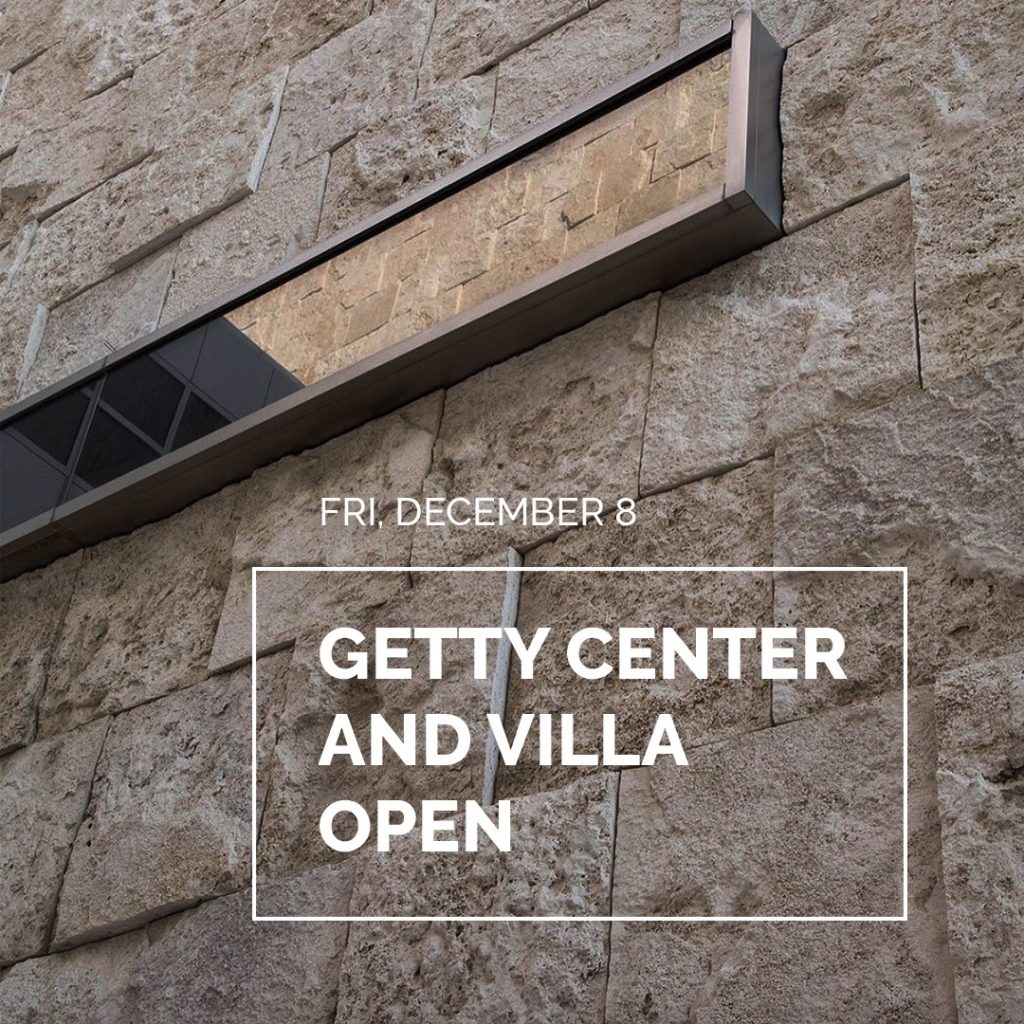This Saturday, from approximately 2:00 p.m. to 9:30 p.m., a book shelf cleaning project will take place on L2. A small crew will be using a vacuum with a Hepa filter, so there will be some noise associated with this work.
Eduroam now at the Getty
The Getty now offers eduroam (education roaming), a secure global roaming access service for the international research and education community. It allows students, researchers and staff from participating institutions to obtain Internet connectivity across their own campus and when visiting other participating institutions.

Free access to the network can be obtained on any personal device by choosing the eduroam wireless network in your device’s wireless settings and logging in with your institution username and password. When prompted, accept a certificate, and you will have a secure connection to the Internet.
No Getty Wi-Fi password is necessary to access eduroam.
Where else can you use eduroam? Review the map or list of participating institutions.
-Sarah Sherman, Reference Librarian
Getty Research Portal Survey
Do you use the Getty Research Portal to access digitized art history texts?
If so, please help us to improve the Portal by taking a 5-minute survey.
If you haven’t used the Portal before, it’s a free and open virtual art history library with 108,000 digitized art history titles from 24 international institutions accessible from anywhere in the world!
Explore the Portal at portal.getty.edu.

Library book move and paging delays
Beginning January 22, the Research Library will be moving 225,000 books from GRI (STORAGE) to our off-site location (LIBRARY ANNEX). The move will take approximately three weeks, during which time the paging of books from both locations may be delayed by a day or two.
Once the move is complete, paging times will remain as is, with 10:00 a.m. being the cut-off time for paging materials from the Library Annex in order to receive them the same day.
As always, new material is shelved in the New Books area on L2 for two months and can also be searched in Primo by choosing the drop-down option called New Books: http://blogs.getty.edu/library/2016/09/
Friday, January 19: Moth treatment scheduled in the Research Library
A moth treatment has been scheduled for this Friday, January 19, beginning at 9:00 p.m.
In preparation, please remove any items from the floor in your work area and place them on your desk, counter spaces, or shelves prior to the treatment. You do not need to worry about chairs, chair mats, or trash cans.
If you have food items stored in your workspace, you should remove them prior to the treatment. If you are unable to do this, you may consider discarding these items when you return.
The library will reopen on Saturday, January 20, but boxes should not be placed back on the floor until after the floor is vacuumed on Sunday.
Monday, January 15: Research Library closed
The Getty Research Institute Library will be closed to all readers on Monday, January 15, in observance of Martin Luther King Jr. Day.
Noise Alert: Thursday, January 11
On January 11, from approximately 7:00 a.m. to 9:00 a.m., there will be loud drilling noises associated with the installation of temporary walls in the main gallery for the upcoming exhibition, Harald Szeemann: Museum of Obsessions, opening on February 6.
Holiday Closure Dates
This year the Research Library will be closed starting at 5:00 p.m. on Thursday, December 21, and during the following holiday period:
December 22 – January 1
Extended Readers may still use the library during the closure, with the exception of December 25 and January 1. However, library services and staff, including Circulation, Reference, and the Special Collections Reading Room, will not be available.
The library will resume regular hours on Tuesday, January 2.
Happy Holidays!

Photo caption: Christmas Eve dinner, Billy and Olga Kluver’s home, 69 Appletree Row, Berkeley Heights, New Jersey, Shunk-Kender, 1970-1971. Harry Shunk and Shunk-Kender photographs, 1957-1987. The Getty Research Institute, 2014.R.20
Getty Center to reopen, December 8
We are delighted to announce that the Getty Center and Villa will reopen for staff, visitors and school groups tomorrow, Friday, December 8, 2017. For hours and visitor information, visit www.getty.edu.
We are deeply grateful to the law enforcement and fire service personnel who worked so heroically to contain the Skirball fire. We are grateful as well for the work of Getty emergency staff.
We continue to be concerned for our neighbors across the freeway as they deal with the consequences of this fire.

Getty Center will remain closed on December 7
Due to nearby fires, The Getty Center will remain closed to visitors tomorrow, Thursday December 7.
Requests for Library Annex books will not be fulfilled tomorrow.
The Fire Department has asked us to close the Getty Villa as well to support emergency operations in the area.

